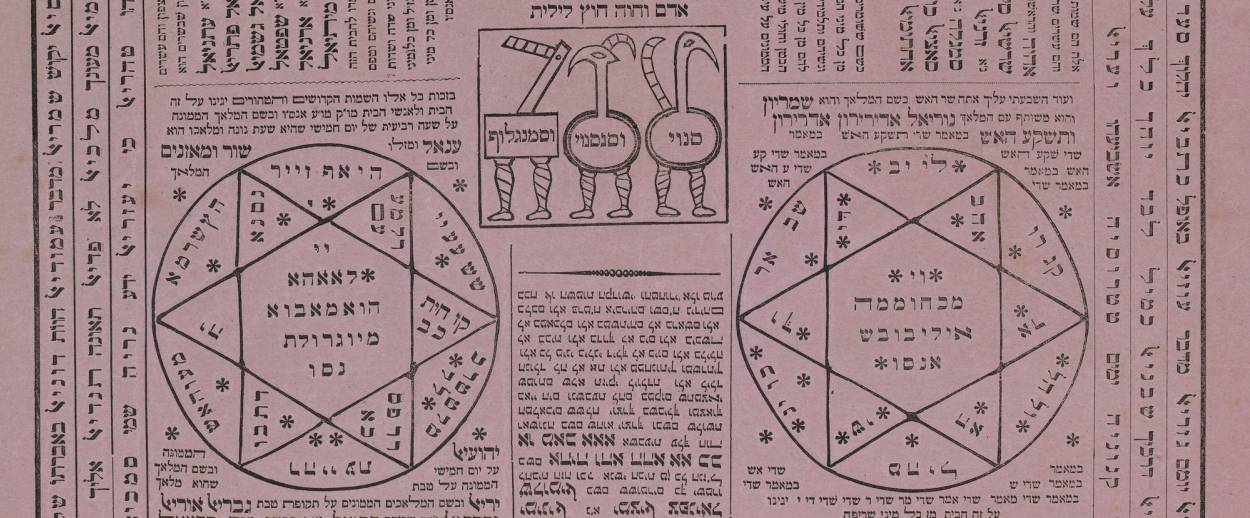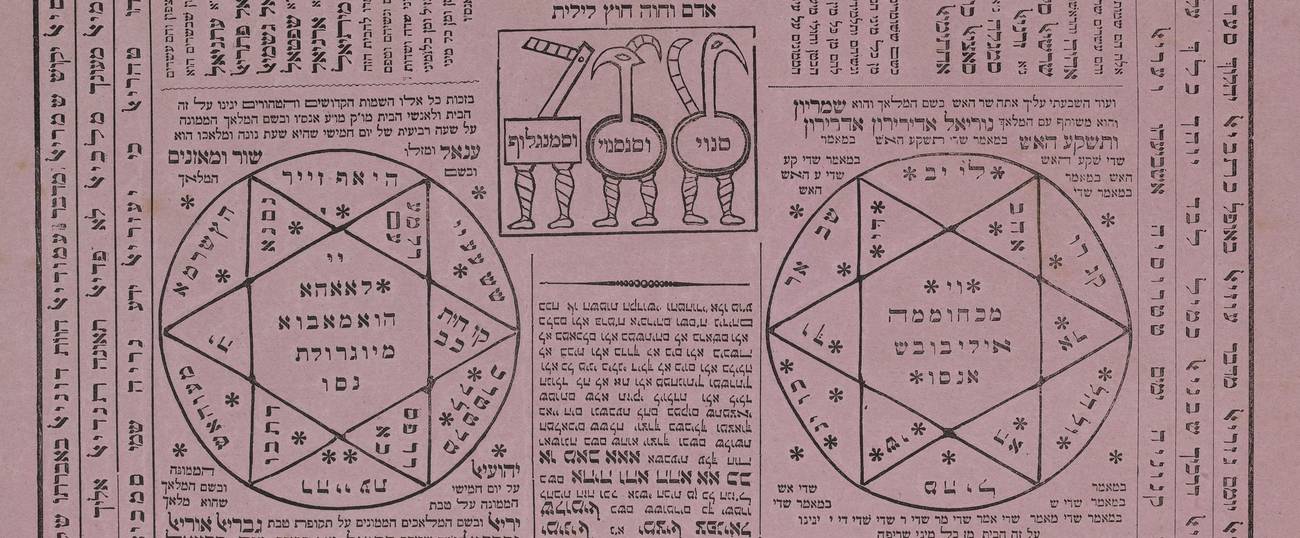The Valmadonna Broadsides
Four hundred years of remarkable printed matter from the most important and extensive private collection of Hebrew books in the world




Since the invention of printing in the 15th century, broadsides—single sheets of paper printed on only one side and designed for public distribution or posting—were used, by Jews and non-Jews alike, as an easy and convenient method of communication. The category of Judaica broadsides in particular includes an astonishing variety of texts prepared for public or semi-public display: communally promulgated regulations; rabbinic responsa; wall calendars; commercial advertisements; poems and riddles in celebration of weddings and public events; dirges; eulogies; educational charts; fundraising circulars; reports of current events; amulets; announcements; prayers both for daily recitation and for special occasions—some celebratory, others tragic—often with vernacular instructions; and so much more.
Naturally, there are also examples of non-Jewish governmental or religious officials using broadsides to communicate with or about the Jews under their authority. Accordingly, the language of Judaica broadsides is both rich and varied: While many are in Hebrew or in Jewish languages written in Hebrew characters, others are in the local vernaculars and scripts which could be easily read by both Jews and non-Jews. And even though large repositories of such items exist in major public Hebraica and Judaica collections around the world, these important documentary sources for the history of the Jews in the early modern era have never been afforded a systematic scholarly treatment—until now.
The recent publication of The Writing on the Wall: A Catalogue of Judaica Broadsides From the Valmadonna Trust Library serves as a welcome introduction to the genre by providing an impressive textual and visual overview of the world’s largest privately held collection of these fascinating artifacts.
The Valmadonna Trust Library is the world’s single most important and extensive private collection of Hebrew books, comprising thousands of rare volumes from virtually all corners of the Jewish world. It was painstakingly assembled over six decades by Jack Lunzer, a collector par excellence, whose official title is Custodian of the Valmadonna Trust. In 2009, the entire Valmadonna Library was transported from Fairport, Lunzer’s London home, to New York City, where for 12 days it was exhibited at Sotheby’s. Thousands of people waited hours in the February cold to see the full collection on display, arranged according to city of origin.
Lunzer was born in 1924 in Antwerp, where his British father worked as a diamond dealer for De Beers. After WWII, he went to work for his father and later started his own firm, and grew it until, by the early 1980s, he had over $100 million in annual sales. At the same time, beginning with a small assortment of Hebrew books inherited from his father-in-law, Lunzer started frequenting book sales and proceeded to assiduously build his library. Lunzer is now 91 years old and has entrusted Sotheby’s with finding a new home for the collection.
The more than 550 broadsides in the collection that are featured in this catalog are one of Valmadonna’s hidden treasures. The scope of the Valmadonna broadsides is vast, both temporally—dating from the 16th through the 20th centuries—and geographically. A significant number come from Italy, the birthplace of Hebrew printing, but there is wide representation from the rest of Europe and the Ottoman Empire as well. Some examples hail from as far afield as Bombay and Calcutta, Yemen and Iraq, Israel and the United States.
The Writing on the Wall provides concise descriptions of each broadside in the collection and includes scholarly essays by Dvora Bregman, Elisheva Carlebach, Ruth Langer, Nahum Rakover, and Adam Shear. In addition, highlighted broadsides feature full-color images and more comprehensive narratives of the human stories behind the printed words, augmented by English translations.
As Adam Shear succinctly observes at the conclusion of his introduction to the volume: “The survival of any material from the distant past—especially the Jewish past—is in many ways the semi-miraculous result of contingency, accident, and happenstance. […] And so, we can feel nothing but gratitude to collectors, like Mr. Jack Lunzer of the Valmadonna Trust Library, who have sought out and preserved material from the past, artifacts that became treasures by virtue of their survival, however ephemeral or quotidian they were in their original forms.”
The accompanying slideshow offers a fascinating glimpse into this remarkable collection of historically important documents. The selection seen here is representative of the entire broadside collection. It runs the gamut, from the sacred to the mundane; from current events to calendars; from riddles to rebuses; from poems to prayers; from amulets to advertisements.
***
You can help support Tablet’s unique brand of Jewish journalism. Click here to donate today.
Sharon Liberman Mintz, Shaul Seidler-Feller, and David Wachtel are the editors of The Writing on the Wall: A Catalogue of Judaica Broadsides from the Valmadonna Trust Library.
Sharon Liberman Mintz, Shaul Seidler-Feller, and David Wachtel are the editors ofThe Writing on the Wall: A Catalogue of Judaica Broadsides from the Valmadonna Trust Library.